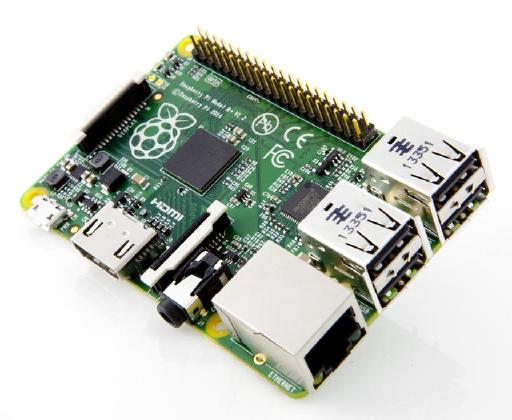

- CHROME DESKTOP REMOTE WAKE UP COMPUTER HOW TO
- CHROME DESKTOP REMOTE WAKE UP COMPUTER WINDOWS 10
- CHROME DESKTOP REMOTE WAKE UP COMPUTER PC
- CHROME DESKTOP REMOTE WAKE UP COMPUTER WINDOWS
Now, after you have successfully setup your PC for Wake-on-LAN, it’s time to test it.
CHROME DESKTOP REMOTE WAKE UP COMPUTER WINDOWS
Turn off fast startup in Windows 11 and Windows 10ĭ) Turn on your Windows PC Remotely using Wake-on-LAN Utility
CHROME DESKTOP REMOTE WAKE UP COMPUTER WINDOWS 10
Now, uncheck “ Turn on fast startup (recommended)” option to disable fast startup in your Windows 10 or 11 PC to allow turn it on remotely over LAN or internet using Wake-on-LAN. Click Change settings that are currently unavailable So, click Change settings that are currently unavailable to enable these functions. Here, you can change power button functions but these functions are not editable by default.

Step 2: Disable Fast Startup to Allow Wake-on-LAN Here, click on “ Choose what the power buttons do“. Open Control Panel in Windows 10 or Windows 11 and go to Hardware and Sound > Power Options. Step 1: Go to Power Options in Control Panel So, we need to disable Fast startup in Windows 10 and 11 first. But this feature causes problems with Wake-on-LAN. Windows 10 and Windows 11 have “Fast Startup” feature enabled by default in order to speed up booting. Disable Turn off adapter and enable Allow this device to wake the ComputerĬ) Disable Fast Startup in Windows 11 and Windows 10 PC Enable Wake on Magic Packet on Advanced tabĪfter that, go to Power Management tab and check “ Allow this device to wake up computer“. After that, select it’s value to Enabled. Here, scroll down and select Wake on Magic Packet. In Network Adapter’s properties, go to Advanced tab.

Step 3: Enable Wake on Magic Packet to Power on Your PC Remotely Here, right-click on your network adapter and select Properties. Now, in Device Manager window, scroll down to Network adapters. Step 2: Open Network Adapter’s Properties Right-click on Start and select Device Manager to open Device Manager We have used Windows 11 in this tutorial, however, it will also work on Windows 10 and earlier version of Windows. From there, select Device Manager.Īlternatively, you can right-click on Start button and select Device Manager. You can right-click on This PC icon and select Manage to open Computer Management. Open the Device Manager in your Windows PC. We will have to enable “wake on magic packet” to power on your Windows PC ( Windows 11, 10, 8/8.1 or 7) using Wake-on-LAN.
CHROME DESKTOP REMOTE WAKE UP COMPUTER HOW TO
SEE ALSO: How to Enable Virtualization (VT-x or AMD-v) in BIOS or UEFI Settings?ī) Change Network Adapter Properties to Remotely Turn on your Windows PCĪfter setting up the BIOS, we need to make some changes in Network adapter properties also. Now, you are ready to turn on your Windows PC remotely using Wake on LAN. Enable Wake on LAN in BIOS/UEFIĪfter that save the settings and exit the BIOS/UEFI settings. After that select Enabled (AC and Battery) and press Enter again. Here, select Wake on LAN and press Enter. In this tutorial, we have taken example of Lenovo ThinkPad. For some manufacturers it may be found in Power or Network sub-menu. When you are in BIOS/UEFI settings, look for Wake-on-LAN setting. Step 2: Enable Wake on LAN and Save Settings If you press correct key during booting up, you will see BIOS/UEFI screen on your PC. Try pressing Esc, F1-F12 or Enter key during bootup. Press F12 or F2 when the Toshiba Logo appears. Press F12 when the Lenovo Logo is displayed. Press F12 when the Dell Logo is displayed. Here is the table showing methods to enter BIOS or UEFI settings for major manufacturers. For every manufacturer, the method to enter BIOS settings is different. Step 1: Go to BIOS or UEFI Settingsįirst, you need to enter BIOS or UEFI settings of your computer. However, most of the modern PCs already have this feature, you just need to enable it in BIOS/UEFI settings. Please note that if your PC doesn’t have this feature, you won’t be able to turn on your PC remotely. A) Enable Wake-on-LAN in BIOS/UEFI Settings to Turn On your PC Remotelyįirst of all, we need to enable Wake-on-LAN feature in BIOS settings. Let’s start with setting up the BIOS first. So, in this tutorial, we are going to show you how to power on your Windows PC remotely via Wake-on-LAN. We will have to make several changes to Windows and BIOS/UEFI settings to enable Wake on LAN. SEE ALSO: How to Make your Computer a Web Server? And after turning your PC on, you can easily take remote access using TeamViewer or any other RDP tool. However, you may need to forward WOL port in your internet router for that. The Wake-on-LAN feature allows you to power on your Windows PC not only from LAN but also over internet.

So, instead of keeping your Windows PC on all the time, you can turn it on remotely using Wake on LAN when required. But it keeps consuming power even when it is not in use. If you do a lot of remote work and need to access your office computer often, you might need to keep it turned on.


 0 kommentar(er)
0 kommentar(er)
